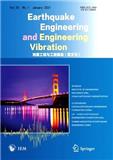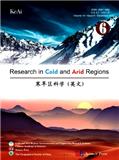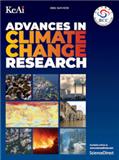地震工程与工程振动(英文版)(Earthquake Engineering and Engineering Vibration)杂志栏目及论文类型发文方向
/有基金 100.0%
地震工程与工程振动(英文版)(Earthquake Engineering and Engineering Vibration)杂志投稿要求论文格式
1、投稿方式:在线投稿。
2、刊内网址:(202303期)
http://www.springer.com/11803
http://mc03.manuscriptcentral.com/eeev(投稿系统)
3、中国地震局工程力学研究所科技杂志社官网:
http://iemzzs.paperonce.org/
4、出刊日期:季刊,逢季首月出版。
5、主编邮箱(202303期):
qxz@iem.cn;gclee@buffalo.edu;
bfs@illinois.edu;zhaozhen@iem.cn
2023年8月28星期一
《地震工程与工程振动(英文版)》作者须知
【2023年03期信息】
Submission of Papers
Earthquake
Engineering & Engineering Vibration operates an online submission
and peer review system that allows authors to submit articles online and
track their progress via a web interface.
Please
visit http://mc03.manuscriptcentral.com/eeev and navigate to the
Earthquake Engineering & Engineering Vibration online submission
site. By using the online form to submit your manuscript, you can
minimize the delay until your work will be considered by the Editorial
Office and reviewed by the referees.
Acceptance
for publication is subject to the manuscript being an unpublished work
presenting a significant original contribution in earthquake engineering
and/or engineering vibration. Submission of a manuscript is taken to
imply that it is not being considered for publication elsewhere. The
author is responsible for obtaining any necessary permission to publish
from contracting agencies involved in the work or from holders of
copyrights on material used in the paper.
Manuscript Preparation
Earthquake
Engineering and Engineering Vibration conducts blinded peer-review.
When uploading your manuscript you will need to upload a manuscript file
with no identifying author information (designate as Main Document) and
a separate title page (designate as Title Page) with author details.
Title Page: The title page should contain: Title, Authors, Affiliations, Acknowledgement, and Footnotes supplying:
Correspondent author′s
information including: the full name, complete mailing address,
telephone and fax number, and, if available, e-mail address; Job titles
of all authors; and The name(s) of sponsor(s) of the research contained
in the paper, along with grant number(s), if any.
General:
The manuscript should be provided in single-spaced typing Time New
Roman, 10.5 pt., on A4 size pages in electronic format using Microsoft
Word. It must be written in English and should not exceed 13,000
word-equivalents. (A journal page contains approximately 1,300 words.)
Technical notes should not exceed 4,000 word-equivalents. If it is
necessary to include additional information, such as appendices, these
should be submitted electronically for inclusion on a web site for the
journal.
Abstracts:
Each paper should include an Abstract of 150-200 words, reporting
concisely on the purpose of the work, the scope of the effort, the
procedures used to execute the work (if of special interest), the major
findings, and a list of three to eight keywords. The abstract must be
self-contained, and it must not require reference to the paper to be
understood.
Text:
Follow this order when typing manuscripts: Title, Abstract, Keywords,
Main text, Appendix, References, Vitage, Figures (including captions)
and then Tables. Footnotes are to be avoided (except for table
footnotes). Please complete text minus the title page, acknowledgment,
and any running headers with author names, to allow blinded review.
Units: The SI system is to be used throughout; if it is necessary to use other units, these should be added in parentheses.
Instructions for authors
References
References
should appear within the text as the author name(s) followed by the
year of publication in parentheses. A list of all references must be
given at the end of the text in alphabetical order by last name of first
author. Make sure the reference information is complete and accurate,
including as necessary and in the following order: last names and
initials of all authors; year of publication; title of paper, report or
book chapter (in quotes); title of book or periodical (in italic);
volume and issue numbers; name and location of publisher (for books),
name and location of publisher or sponsor for proceedings), or city of
publication (for non-U.S. journals); and inclusive page numbers.
The references should be listed in the following style:
Liu
Huixian and Zhang Zaiyong (1980), “Lessons Learned from the 1976
Tangshan Earthquake,” Proceedings of the 7th World Conference on
Earthquake Engineering, Vol. IX, Istanbul, Turkey, pp. 453–460.
Huo
Linsheng and Li Hongnan (2004), “Torsionally Coupled Response Control
of Offshore Platform Structures Using Circular Tuned Liquid Column
Dampers,” China Ocean Engineering, 18(2): 173–183. (in Chinese)
Newmark NM and Rosenblueth E (1971), Fundamentals of Earthquake Engineering, Prentice-Hall, Inc., Englewood Cliffs, N.J.
Roesset
JM (1977), “Soil Amplification of Earthquake,” in CS Desai and JT
Christian, editors, Numerical Methods in Geotechnical Engineering,
Chapter 19, John Wiley.
Trifunac
MD (1982), “A Note on Rotational Components of Earthquake Motions on
Ground Surface for Incident Body Waves,” Soil Dynamics and Earthquake
Engineering, 1(1): 11–19.
Illustrations
All
illustrations must be suitable for reproduction (which may include
reduction) without further modifications. Photographs, charts and
diagrams are all to be referred to as “Figure(s)” and must be numbered
consecutively in the order to which they are referred. They can be
integrated into the text, in final size, if possible. Alternatively,
they can be grouped together at the end of the manuscript.
Line
drawings: All lettering, graph lines and points on graphs should be
sufficiently large and bold to permit reproduction when the diagram has
been reduced to a size suitable for inclusion in the journal. It is
recommended to use a sans-serif font, at a 12 pt. size to ensure clarity
when reproduced.
Tables:
Tables must be numbered consecutively and given a suitable caption and
can also be integrated into the text with a suitable size, if possible.
Footnotes should-se letters. No vertical rules should be used.
Further information
Proofs
will be sent to the author (first named author if no corresponding
author is identified of multi-authored papers) and should be corrected
and returned without delay. The preferred method of the return of
corrections is by e-mail. Corrections should be restricted to
typesetting errors; any others may be charged to the author.









